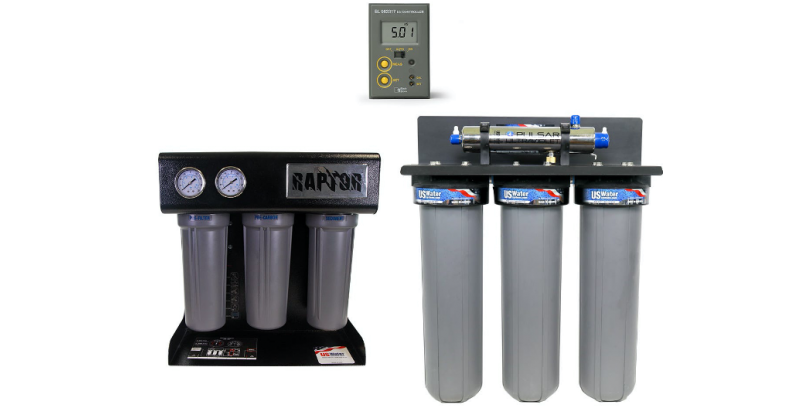What is 1,4 - Dioxane?
Chemical contamination or harmful water pollution is something nearly every individual is aware of unless they have been living under a rock. A chemical contaminant that has been in the news recently has been discovered in an area of Southeastern North Carolina around Greensboro, Pittsboro, Fayetteville, Cape Fear, Wilmington and surrounding local areas. 1,4 Dioxane is what we call an emerging contaminant because it is currently unregulated as scientists around the globe are trying to gather more definitive evidence about it's effects on humans and how harmful it is to the human body. This global search simply takes a long time, due to the fact there isn't much material research on these types of chemicals that are causing the water pollution.
1,4 - Dioxane in the Water
1,4-Dioxane is the emerging chemical contaminant that has been demonstrated to cause harm to the liver and kidney to laboratory rats chronically exposed to chemical in their drinking water. There have also been studies conducted of workers exposed to the chemicals through their jobs, but there was no conclusive link to cancer. However, the EPA has determined the chemicals to be a probable human carcinogen., which means that their is little evidence linking the chemicals to cause cancer in humans but at the given time it is not conclusive.
This compound of chemicals is an industrial solvent found in paint strippers, varnishes, soaps, make-up, airplane de-icers, and antifreeze. It happens to be one of 30 chemicals the EPA has identified as needing to be tracked and studied, with the goal of eventually regulating the ones which pose the greatest risk and are harmful to humans and their health. The idea is to gain as much control as we can on this chemical to protect human health. The chemical compound is fully miscible in water, meaning that it dissolved almost completely. It is colorless and odorless and what you don't smell, see or know can't hurt you right? We all know better.
This make migration into and through a water supply happen very quickly. Extended long-term exposure to large amounts of of these chemicals has been shown to cause symptoms of nervous system depression and lesions on the stomach, lungs, liver and kidneys. To read more, the USEPA has a Technical Fact Sheet on 1,4-Dioxane.
Removal of 1,4 - Dioxane From the Water
Not a lot of research has been done on removal of 1,4-Dioxane chemicals from water supplies, but advanced oxidation processes using hydrogen peroxide with ultraviolet light or ozone is used to treat these chemicals in wastewater. Additionally, carbon filtration followed by reverse osmosis and prolonged contact carbon filtration after the RO system will have an impact at removing 50% to 70% or more of the chemicals from the water. At this juncture advanced oxidation processes are not economically viable or reliable enough to be considered for residential use.
Conclusion
I look at every aspect of water contamination, including asking myself the question "What would I do if I had those contaminants in my water supply?" To me, the answer is perfectly clear. I would use a technology or technologies that are proven to remove the largest spectrum of contaminants.
Those technologies would include Electro-Absorption, Prolonged Contact Granular Activated Carbon and reverse osmosis. Many chemicals such as chlorine and chloramine can vaporize from the water to the air and ingestion is not the prime route of human contamination. Skin absorption and vaporization are also major concerns.
Every application has the potential to be different, which is why a detailed Laboratory Water Analysis is so vitally important. While you want to remove the chemicals, it is also imperative to determine if other competing contaminants will affect the operation of any purposed system. This is not a cookie cutter system that you pull of the shelf of your big box store in Aisle 17, Row 3, Position 337. It should be custom-engineered to your particular water profile so that it will accomplish what you need it to.
Or you can wait for the government to rectify the problem... 10, 15, even 20 years... or you can take charge of the problem for your own home. The technology exists to solve these problems and a whole lot more, right now. Typically, a whole house water treatment plant like the system pictured below costs under $10,000. This is your water we are talking about... what are you waiting for?

By the way, what is pictured above is a typical whole-house reverse osmosis system which is becoming more-and-more popular with people who are concerned about their water quality. Reverse Osmosis removes the widest spectrum of contaminants of any water treatment process. PERIOD! Couple that with prolonged-contact granular activated carbon (GAC), anti-scalant to prevent scaling of membranes and ultraviolet disinfection, and you can see why the above systems is so popular. It dramatically reduces 1,4-Dioxane and hundreds (actually thousands) of other contaminants. What's not to like?






Leave a comment
Please note, comments need to be approved before they are published.